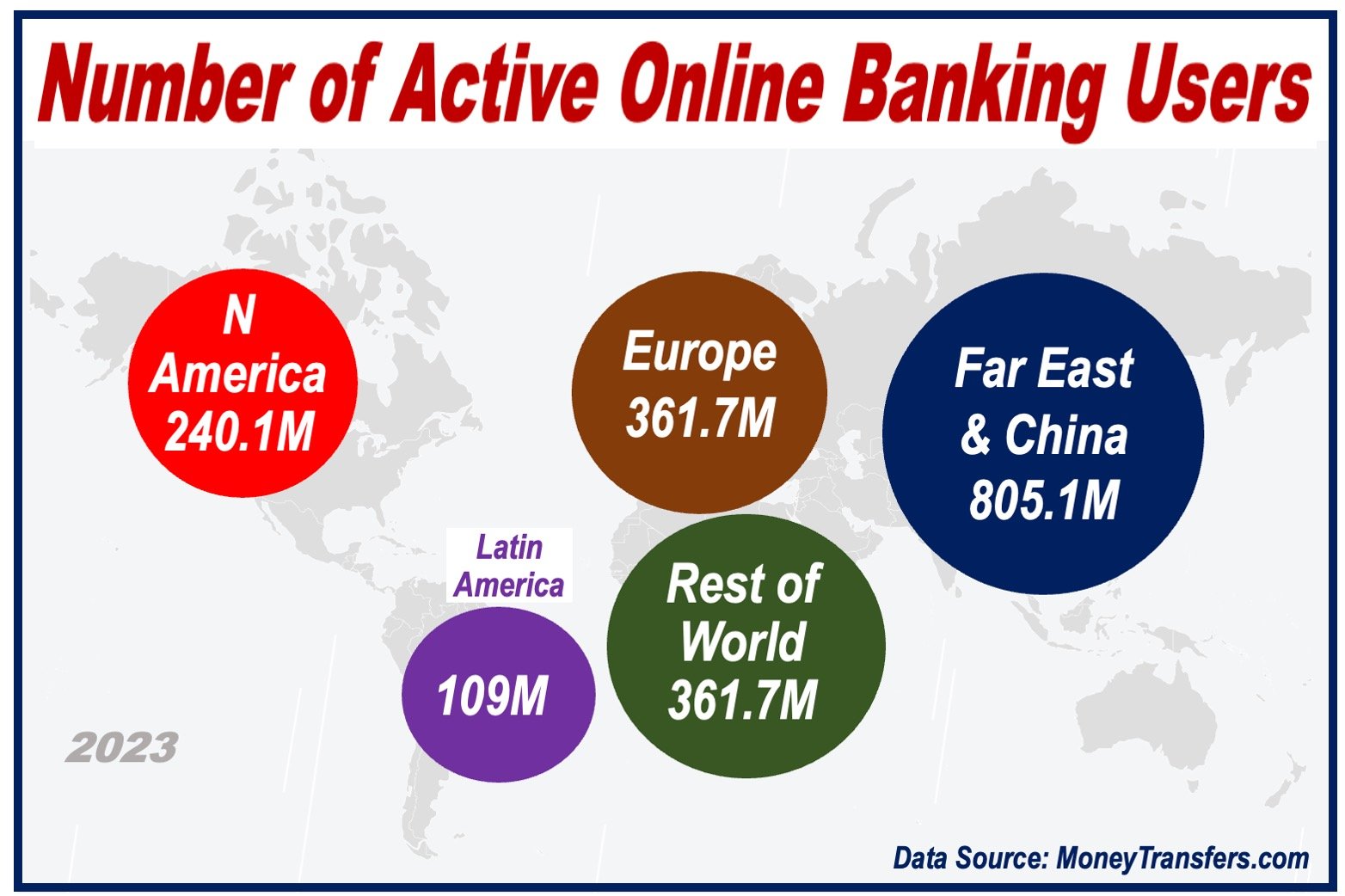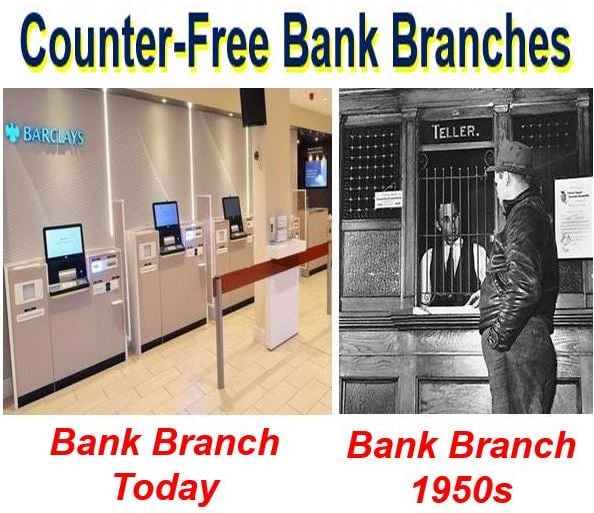Online banking – definition and meaning
Online Banking, also known as Digital Banking, Internet Banking, E-Banking, or Virtual banking, refers to carrying out banking operations on the Internet.
For example, it may include paying bills, transferring money, applying for loans, opening or managing savings and checking accounts, investing in stocks or bonds, ordering checks, setting up account alerts, and managing investments. applying for credit cards, arranging for overdraft protection, updating personal information, and checking one’s balance online.
It also refers to setting up regular payments, applying for credit cards, arranging for overdraft protection, updating personal information, and checking one’s balance online.
Online banking part of “fintech”
‘Online,’ in this context, means ‘on the Internet.’ We refer to this type of banking and other innovations in the world of finance as part of fintech, which stands for financial technology.
Virtually every bank today offers the service. Customers can conduct their financial affairs through the Internet rather than having to come into the branch.
You can conduct online banking from your computer, tablet, or smartphone. According to banks and most customers, the main advantage online banking offers is permanent access to one’s account. It is also much cheaper and accessible from almost anywhere.

If you do not currently have an internet banking facility and want it, talk to your bank. Most financial institutions will give you the choice of having a telephoning or internet banking service. In fact, you can have both.
They will give you a password and username. Some banks let you choose them. In some cases, they may change regularly. In fact, with some accounts, the customer has to enter a different code each time.
Finance Glad has the following definition of online banking:
“1. The process of managing one’s bank account over the Internet. Customers conduct their transactions electronically (online). 2. The activity or process of operating as a bank over the Internet.”
Mobile Banking
If you are conducting banking transactions on-the-go using an application (app) on your smartphone or tablet, you are involved in mobile banking.
Mobile banking is a subset of online banking, but does not include the use of laptops or desktop computers.
Wikipedia explains below one of the differences regarding the online banking and mobile banking software:
“Unlike the related internet banking it uses software, usually called an app, provided by the financial institution for the purpose. Mobile banking is usually available on a 24-hour basis.”
History of online banking
Online banking has been around for much longer than most people realize. In fact, since the early 1980s. At the time, it was very different to what we have today.
In the early 1980s, online banking referred to the use of a terminal, keyboard, and monitor. People accessed their bank accounts via a landline telephone.
In the United States, online banking started in New York City in 1981. Citibank, Chase Manhattan, Manufacturers Hanover, and Chemical Bank started offering the service. However, it did not catch on.
In the UK, Bank of Scotland set up a home online banking service called ‘Homelink’ in 1983. It used the British Prestel ‘Viewlink’ system.

Initial resistance to online banking
The first bank in the US to offer internet banking to all its customers was Stanford Federal Credit Union in 1994. Other banks soon followed its lead.
At first, there was a great deal of resistance from customers. Some wondered how secure it was, while others were put off by how long it took to start up.
Since the turn of the millennium, online banking has expanded dramatically. First, it took off in the advanced economies, and then across the whole planet.
Online banking fraud
Banks tell us that banking online is super safe. However, according to Financial Fraud Action (FFA) UK, in the first half of 2014, online banking fraud in Britain reached ₤29.3 million ($47.6 million). This was a 71% increase on the previous year. Furthermore, this was only detected bank fraud.
The report authors suggested that despite more secure log-in processes, Internet fraudsters were gaining. In other words, British banks and their customers appear to be becoming more vulnerable to online fraud.
Banks are continuously trying to be at least one step ahead of cyber criminals. In September 2014, Barclays Bank introduced a biometric reader. This reader uses finger-vein authentication technology. This means that customers can access their online bank accounts with no need for codes or passwords.
Banking online forms part of E-Commerce. E-Commerce stands for Electronic Commerce.
Compound phrases with “online banking”
There are many compound phrases in the word of online banking. A compound phrase is a term that consists of two or more words. Let’s have a look at some of them:
-
Online Banking Security
Measures and protocols to protect users’ data and transactions in online banking.
Example: “Due to enhanced online banking security, all transactions now require two-factor authentication.”
-
Online Banking Platform
The software or interface used by banks to provide online banking services.
Example: “The bank upgraded its online banking platform to improve user experience and functionality.”
-
Online Banking Account
A bank account that can be fully accessed and managed over the internet.
Example: “She checked her online banking account to confirm the recent transactions.”
-
Online Banking Services
Various financial services offered by banks through the internet.
Example: “Their online banking services include bill payments, fund transfers, and loan applications.”
-
Online Banking Application
A mobile or web app designed to facilitate banking transactions online.
Example: “He downloaded the bank’s online banking application to manage his finances on the go.”
-
Online Banking Transaction
Financial operations conducted through online banking, such as payments or transfers.
Example: “She completed an online banking transaction to pay her electricity bill.”
Two Videos
These two interesting educational videos, from our sister YouTube channel – Marketing Business Network, explain what ‘Online Banking’ and ‘Online Business’ are using simple, straightforward, and easy-to-understand language and examples.
-
What is Online Banking?
-
What is Online Business?

